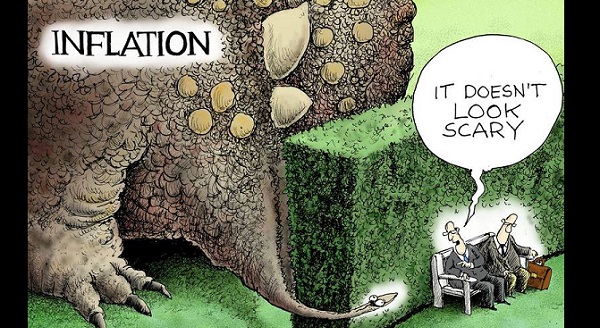Cost of Misrepresenting Inflation

From Current Affairs Notes for UPSC » Editorials & In-depths » This topic
IAS EXPRESS Vs UPSC Prelims 2024: 85+ questions reflected
What are the factors driving inflation?
- It is a mistake to conclude that inflation is solely driven by sharp rise in prices of several goods. Such a conclusion would be way off mark when these goods’ have only a small weightage in the Consumer Price Index’s consumption basket.
- For instance, there has been a spike in the prices of edible oils and crude oil– the latter especially after the Ukraine-Russia War’s outbreak. It is being highlighted as the major cause of India’s current inflation situation.
- However, these 2 commodities have a relatively low share in the consumption basket based on which CPI is determined.
- A study of price trends show that the price inflation of the commodity groups ‘fuel and light’ (proxy for imported fuel price) and ‘fats and oils’ (proxy for edible oil prices) has been lower in 2022’s 1st 5 months compared to the situation in 2021’s last 5 months.
- On the other hand, the price inflation of ‘food and beverages’ group is now higher than last year. Notably, this group’s direct contribution to inflation dwarfs all other groups’ contribution.
- This shows that the current situation is more significantly driven by domestic factors. This can also be seen from how India has been witnessing a rising inflation trend since October 2021– even before the war broke out in Eastern Europe.

How far can monetary policy control inflation?
- The RBI has been raising the repo rate since May. This policy of increasing the interest rate to control inflation involves an implicit assumption that an economy-wide excess demand is causing more money to chase fewer goods.
- However, such an assumption is contradicted by how the food prices are rising faster than other goods’ prices. The relative price of food has been increasing in the recent months.
- This shows that the excess demand is actually the demand for foodstuff.
- However, Indian authorities responsible for inflation management continue to create the impression that the inflation situation can be reined in using monetary policy.
Why is this stance concerning?
- This stance could be potentially harmful for the Indian economy. Holding on to the view that raising interest rates would solve the inflation issue could mean that attention isn’t paid to the necessary interventions on the supply-side.
- Notably, American economists have been calling for bringing back food surpluses in the USA- a country that has hardly ever faced food shortages. India, on the other hand, has had experience with food shortages and the average Indian household allocates a high share of its budget for food.
- Now, the additional undercurrent of food price inflation and the subsequent exacerbation of poverty stands in the way of a more rapid economic recovery and expansion.
What is the way ahead?
- Inflation is a major concern for governments across the world and there is even a speculation that a recession is fast approaching.
- Meanwhile, the domestic government has been holding that India is growing at a faster rate than most other economies and is facing an inflation rate lower than that of many other countries.
- India’s growth performance isn’t a surprise as its economy contracted the most among the larger economies in 2020-21. And yet, the country’s 2021-22 real output was barely higher than its pre-pandemic performance.
- Monetary policy is a macroeconomic tool and it can’t affect any particular price.
- Economists have been flagging the inadequacy of monetary policy in addressing inflation driven by food prices.
- Nobel Laureate Joseph Stiglitz, at the June WEF meet in Davos, said that the inflation problem cannot be solved by raising interest rates, as it isn’t going to create more food. He instead called for supply-side interventions.
- He said that trying to do everything to increase the global food supply is going to do more in addressing the current inflation situation.
- The head of US Federal Reserve Bank, Jerome Powell acknowledged that the bank’s tools could only so much in battling inflation caused by rising food and energy prices.
- There is a need to address the excess demand for foodstuff in the market.
- The current inflation reflects a domestic imbalance, hence, it would not be solved by the ongoing crash of food prices on the global market.
Conclusion:
Failing to see that India’s inflation situation is due to economy’s structural shortcomings ensures that there is poor chance of solving a very urgent problem.
Practice Question for Mains:
How much of a role is international prices playing in India’s inflation situation? Discuss. (250 words)
If you like this post, please share your feedback in the comments section below so that we will upload more posts like this.

